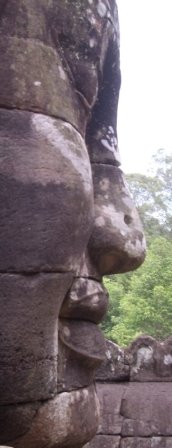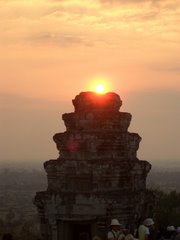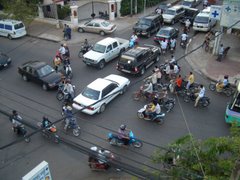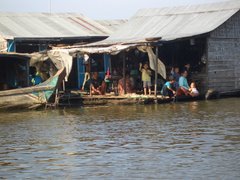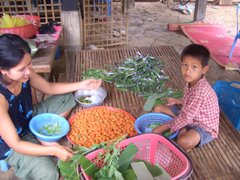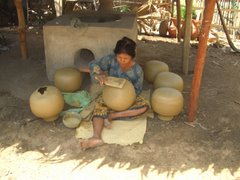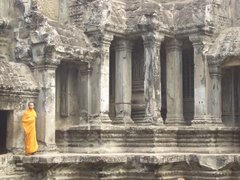I’ve just returned from a 10 day trip to
Japan to see Tyler who has just recently relocated there to teach English.
Izu Oshima is his new home, a sleepy volcanic island about 100km from
Tokyo out in the Pacific.
Sleepy refers to the people – the volcano is very much alive and kicking.
Let me tell you, Japan is no picnic for the English speaking traveler. This being claimed by one who has spent six months of this year in backward Cambodia. For the record, Cambodians speak and understand far more English than the Japanese.
It was really interesting ordering my first meal after I had settled into the hotel and then ventured out into modern Tokyo. I was lured into a restaurant by its sidewalk English signboard saying “special”. That was the last English word I read. Try ordering off a menu with no English and no pictures. What I ended up with was a bowl of cold rice with a lump of raw minced and marinated fish on top. Good thing I’ve been training my stomach and tastebuds on Cambodian cuisine.
Tyler met up with me about 3pm and we ventured out into the unknown of Tokyo, visiting the emperor’s digs and old section of the city the first day before heading out to the fabby chic area of Shibuyo that night. Think Times Square. The world’s largest pedestrian crossing where when the lights go green, all walkers unite into a mass of magnificent humanity. Unbelievable.
We spent the next two nights in Tokyo as well before heading over to Tyler’s island. It’s only a 90 minute ride by hydrofoil, skimming along the water at 50 mph - a very pleasant ride indeed. Instantly, we entered a world starkly different from that of Tokyo. Oshima has 9,000 inhabitants, scattered about in 5 villages – Tokyo is the largest metropolitan area in the world with over 35 million people in the metroplex.
1986 was the most recent volcanic eruption, but it’s not the last. To make things really real, Tyler (and all Oshima residents) has a white plastic hard hat in his closet, just in case…

Tossing caution to the wind, Tyler and I hiked Mt. Mihara – the volcano – on my second to last day. Our 8 km jaunt was like going to the moon. It’s the fantasy birthplace of Godzilla (Go-zee-ra). Imagine an ancient crater that is 5 km in diameter and then within that circumference another crater, 600 feet higher and 1km in diameter; and then within that a .5km cylindrical blow hole. We hiked it all in virtual solitude, seeing only two people at the very end. Spectacularly eerie. The photo below is Tyler standing on the edge of an extinguished lava flow on the inside of the older crater.

I’m so glad I went to be with Tyler in his new habitat. I think he was glad to see me too, particularly in a sea of change too. I’m very proud of him for taking this very big and unusual step. I’m sure he’ll do well. He’s a great adapter and knows no strangers, even when there are language and cultural barriers.
 Asia is the new frontier in so many ways and does an exceptional job in arresting our comfy Western ways. Tyler is in for the time of his young life. (yes, that's Mt. Fuji on the left, as seen from "Tyler's Island"). If you'd like to write to him, his new email address is: tylerknoxville@gmail.com
Asia is the new frontier in so many ways and does an exceptional job in arresting our comfy Western ways. Tyler is in for the time of his young life. (yes, that's Mt. Fuji on the left, as seen from "Tyler's Island"). If you'd like to write to him, his new email address is: tylerknoxville@gmail.com
Proud Dad...






